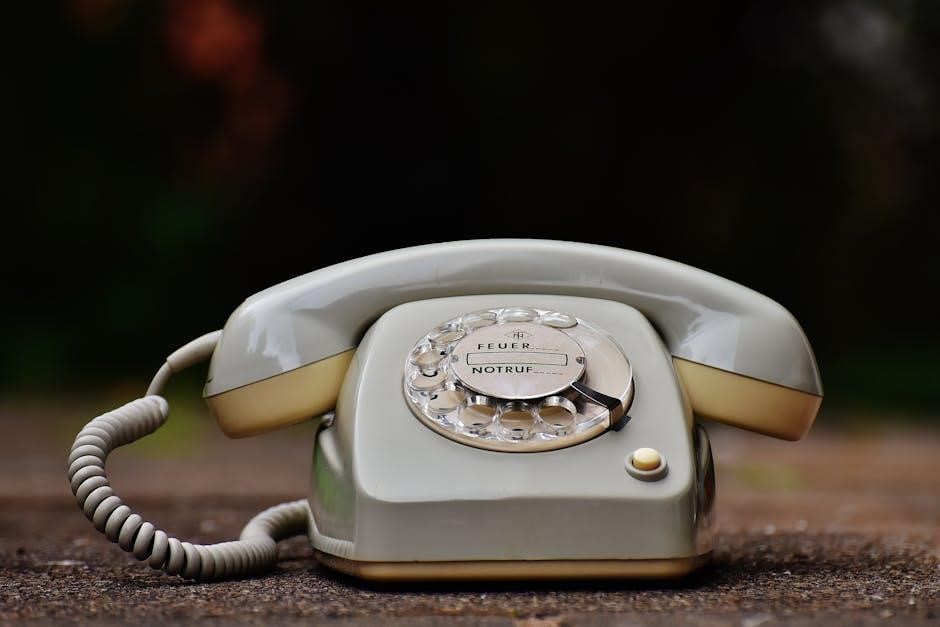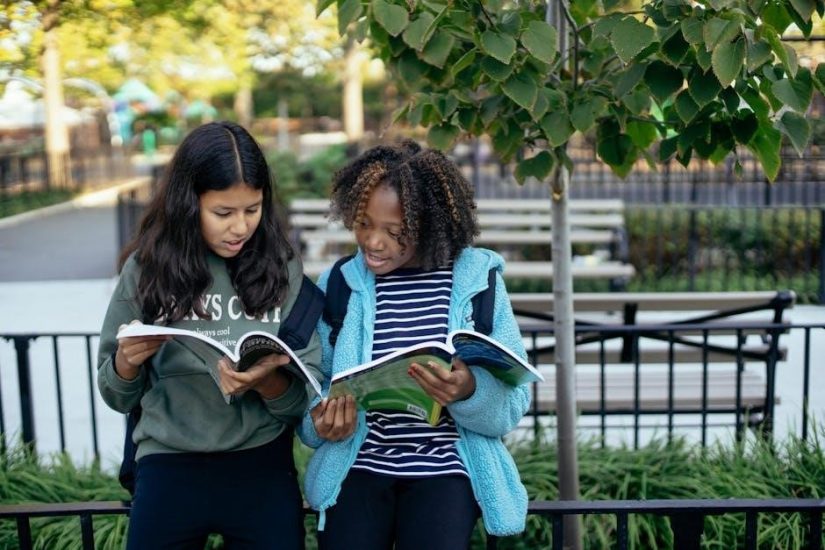How to Talk to Anyone: A Comprehensive Guide
Discover strategies to connect effortlessly with anyone, mastering conversation techniques, and building confidence in communication, transforming interactions into meaningful connections across diverse personalities and situations.
Effective communication is the cornerstone of building meaningful connections with others. It involves clarity, active listening, and empathy, ensuring messages are conveyed and understood seamlessly. By mastering verbal and non-verbal cues, individuals can navigate diverse personalities and situations with confidence. Adapting communication styles to suit different audiences fosters deeper understanding and mutual respect. Whether engaging in casual conversations or professional discussions, the ability to express thoughts clearly and interpret others’ perspectives is invaluable. This guide provides practical strategies to enhance communication skills, enabling anyone to connect effortlessly and build lasting relationships. Explore techniques to overcome barriers, handle challenging interactions, and cultivate a positive, approachable demeanor. With practice, effective communication becomes second nature, transforming everyday interactions into opportunities for growth and connection.

Understanding Personality Types
Recognizing personality traits like introversion, extroversion, and ambiversion is key to effective communication, helping tailor interactions and foster meaningful connections with diverse individuals and their unique communication styles.
Understanding Introverts and Extroverts
Effective communication begins with understanding the fundamental differences between introverts and extroverts. Introverts recharge energy through solitude or small groups, often preferring deep, meaningful conversations. They may need time to reflect before speaking and can feel drained by prolonged social interactions. On the other hand, extroverts thrive in social environments, drawing energy from being around others. They tend to think aloud, enjoy brainstorming sessions, and may feel restless in quiet, isolated settings. Recognizing these traits allows you to adapt your communication style, ensuring both parties feel comfortable and heard. For introverts, provide time for reflection and listen patiently. For extroverts, engage actively and encourage their enthusiasm. Balancing these approaches fosters connection and mutual understanding in any conversation.
The Role of Ambiverts in Communication
Ambiverts, individuals who exhibit both introverted and extroverted traits, often excel in communication due to their adaptability. They can connect with a wide range of personalities by balancing listening and speaking. Ambiverts thrive in environments where they can shift between introverted reflection and extroverted engagement, making them natural mediators. Their ability to adapt to different social dynamics allows them to build rapport effectively. When interacting with ambiverts, encourage open dialogue and provide opportunities for both sharing and reflection. Their balanced approach fosters trust and understanding, making them invaluable in diverse communication settings. By embracing their flexibility, ambiverts can navigate conversations with ease, ensuring meaningful connections are formed. Understanding and leveraging their unique strengths can enhance overall communication strategies in personal and professional contexts.
Leveraging Emotional Intelligence
Emotional intelligence (EI) plays a crucial role in effective communication, enabling individuals to understand and navigate social dynamics seamlessly. High EI fosters empathy, self-awareness, and strong interpersonal skills, which are essential for connecting with diverse personalities. By recognizing and managing one’s emotions, individuals can approach conversations with clarity and composure. Empathy allows for deeper understanding of others’ perspectives, fostering trust and rapport. Developing emotional intelligence involves practicing self-reflection, active listening, and adaptability. These skills help in tailoring communication styles to suit different individuals, ensuring meaningful interactions. Cultivating EI enhances conflict resolution, collaboration, and overall relationship-building. In a world where misunderstandings are common, emotional intelligence acts as a bridge, facilitating harmony and understanding in personal and professional settings. Mastering EI transforms ordinary conversations into impactful connections, making it a cornerstone of effective communication.

Mastering Active Listening
Active listening is a powerful communication tool, focusing on fully engaging with and understanding the speaker’s message, fostering deeper connections and meaningful conversations through attention and empathy.
The Power of Verbal Cues
Verbal cues are essential in effective communication, offering subtle yet powerful ways to guide conversations and maintain engagement. They include phrases like “I see” or “Go on,” which encourage the speaker to continue, and questions that provoke deeper discussion. These cues help establish rapport, showing active listening and genuine interest. They also aid in clarifying points, ensuring mutual understanding. For instance, asking, “What do you mean by that?” can prevent misunderstandings. Verbal cues like “That’s interesting” or “I agree” validate the speaker’s thoughts, fostering a positive dialogue. Moreover, they can steer the conversation in a desired direction, helping to manage its flow. Mastering verbal cues enhances your ability to connect meaningfully and navigate discussions with ease, making you a more effective communicator in both personal and professional settings. They are tools that, when used thoughtfully, can transform ordinary conversations into impactful interactions. By incorporating these cues, you demonstrate attentiveness and empathy, key elements of successful communication. Ultimately, verbal cues are not just words; they are bridges that strengthen connections and foster understanding between individuals.
Non-Verbal Communication Essentials
Non-verbal cues play a vital role in communication, often conveying more than words alone. Body language, facial expressions, and eye contact are key elements that express emotions and intentions. Maintaining open postures, such as uncrossing arms or standing tall, signals approachability and confidence. Eye contact builds trust and engagement, while nodding shows active listening. Facial expressions, like smiling, can create a welcoming atmosphere. Gestures, when used appropriately, emphasize points and add enthusiasm to conversations. Proximity and touch, when culturally appropriate, can convey empathy or solidarity. Mirroring the other person’s body language subtly builds rapport. Additionally, being mindful of personal space and cultural differences ensures respect and comfort. Mastering non-verbal communication enhances your ability to connect and navigate interactions smoothly. These cues, when aligned with verbal messages, create a powerful and cohesive communication style, fostering deeper connections and understanding in any conversation. They are the silent yet impactful tools that complement your words and amplify your message.
Asking the Right Questions
Asking the right questions is a cornerstone of effective communication, fostering engagement and deeper understanding. Open-ended questions encourage the other person to share their thoughts and feelings, while closed-ended questions can limit the conversation. For example, instead of asking, “Do you like this idea?” ask, “What do you think about this idea?” This invites a more detailed response. Follow-up questions, such as “Can you elaborate on that?” or “How did that make you feel?” show genuine interest and keep the dialogue flowing. Avoid leading questions that suggest a specific answer, as they can bias the conversation. The goal is to spark insight and build rapport. By crafting thoughtful questions, you guide the discussion meaningfully and create a space for authentic connection. This skill not only enhances your understanding of others but also makes them feel valued and heard. It’s a powerful way to deepen relationships and resolve conflicts effectively. Always tailor your questions to the context and listen attentively to the responses.
Managing Distractions Effectively
Managing distractions is crucial for meaningful conversations. In today’s world, interruptions from phones, noise, or even your own thoughts can derail a discussion. To stay focused, identify potential distractions beforehand and minimize them. Turn off notifications, choose a quiet setting, and maintain eye contact to show your engagement. If interrupted, politely acknowledge the distraction and refocus the conversation. Internal distractions, like worrying about what to say next, can also hinder communication. Practice mindfulness to stay present and avoid mental drift. If your mind wanders, gently bring your attention back to the speaker. By controlling distractions, you demonstrate respect and create a space for genuine connection. This not only improves understanding but also builds trust and strengthens relationships. Effective communication thrives when both parties are fully present and attentive. Learn to navigate interruptions gracefully and keep the dialogue flowing smoothly. This skill enhances your ability to engage deeply with others. Avoid letting distractions overshadow the conversation’s importance.

The Art of Asking Questions
Asking questions is a cornerstone of effective communication, fostering engagement, clarity, and deeper insights. It encourages thoughtful dialogue and helps build rapport with others.
Crafting Open-Ended Questions
Crafting open-ended questions is essential for meaningful conversations, as they encourage the other person to share detailed thoughts and feelings. These questions typically begin with “what,” “how,” “why,” “which,” or “could,” and they cannot be answered with a simple “yes” or “no.” Open-ended questions foster deeper engagement and demonstrate genuine interest in the speaker’s perspective. For example, instead of asking, “Do you like your job?” you might ask, “What do you enjoy most about your job?” This approach invites reflection and builds rapport. Additionally, open-ended questions help to avoid leading or biased inquiries, allowing the conversation to flow naturally. By mastering this technique, you can uncover valuable insights and create a more dynamic dialogue.
- Encourages detailed and thoughtful responses.
- Fosters active listening and engagement.
- Helps to avoid leading or closed-ended questions.
- Builds rapport and strengthens connections.
The Importance of Follow-Up Questions
Follow-up questions are crucial for delving deeper into a conversation and understanding the speaker’s thoughts and feelings. They demonstrate genuine interest and curiosity, helping to build trust and rapport. By asking follow-up questions, you encourage the other person to elaborate, providing more insight and fostering a more engaging dialogue. These questions should be open-ended and non-leading, allowing the speaker to share their perspectives freely. For instance, after a response, you might ask, “Can you tell me more about that?” or “How did that experience make you feel?” Follow-up questions prevent conversations from becoming superficial and ensure meaningful exchanges. They also show that you value the speaker’s input, enhancing the overall quality of communication.
- Encourages deeper and more meaningful conversations.
- Demonstrates genuine interest and curiosity.
- Builds trust and strengthens relationships.
- Helps to uncover valuable insights and perspectives.
Avoiding Leading Questions
Leading questions can subtly influence a conversation, often steering it in a specific direction or suggesting a particular answer. These types of questions can make the other person feel manipulated or cornered, undermining the authenticity of the dialogue. To maintain a balanced and respectful exchange, it’s essential to frame your questions neutrally. Instead of asking, “Don’t you think this is a great idea?” opt for, “What do you think about this idea?” This approach allows the speaker to express their genuine thoughts without feeling pressured. Avoiding leading questions fosters an environment of trust and open communication, ensuring that the conversation remains fair and unbiased.
- Prevents influencing the speaker’s response unfairly.
- Encourages honest and authentic dialogue.
- Creates a safe and respectful communication space.
- Helps to avoid misunderstandings or defensiveness.

Building Confidence and Positivity
Confidence and positivity are foundational to effective communication. They create a welcoming atmosphere, making others feel comfortable and valued. Cultivate self-assurance through preparation and self-affirmations.
Techniques to Build Self-Confidence
Building self-confidence is a cornerstone of effective communication. Start by practicing positive affirmations daily to reframe your mindset. Visualize successful interactions beforehand to boost your belief in your abilities. Preparation is key—research topics or practice responses to feel more secure. Focus on your strengths and past achievements to remind yourself of your capabilities. Engage in activities that bring you joy and fulfillment, as this naturally enhances confidence. Additionally, adopt a growth mindset, viewing challenges as opportunities to improve rather than threats. Finally, take small steps outside your comfort zone to gradually build confidence in new situations. Over time, these practices will help you project self-assurance and engage others with ease.
Maintaining a Positive Attitude
Maintaining a positive attitude is essential for effective communication, as it fosters a welcoming and approachable demeanor. Cultivate gratitude by reflecting on positive experiences daily, which helps shift your mindset. Practice reframing negative thoughts into constructive ones, focusing on solutions rather than problems. Surround yourself with uplifting individuals who inspire positivity. Mindfulness techniques, such as deep breathing and self-awareness, can help you stay grounded and optimistic. Embrace challenges as opportunities for growth, and celebrate small victories to reinforce a positive outlook. A positive attitude not only enhances your interactions but also creates a ripple effect, making conversations more enjoyable for everyone involved. By consistently nurturing positivity, you become a magnet for meaningful and engaging connections.

Handling Different Personalities
Adapt your communication style to different personalities by understanding their traits and preferences, fostering rapport and mutual respect in every interaction.
Communicating with Talkative Individuals
When engaging with talkative individuals, prioritize active listening to show genuine interest and avoid interrupting. Nodding, maintaining eye contact, and using verbal cues like “I see” or “Go on” can encourage them to feel heard. However, politely interject when necessary to guide the conversation back on track. Ask open-ended questions to steer the discussion, but avoid letting it dominate your interaction. If the conversation becomes one-sided, subtly shift the focus by introducing a related topic or politely asking to share your thoughts. Patience and empathy are key, as talkative individuals often seek validation or enjoy sharing their experiences. Balancing engagement with gentle boundaries ensures a respectful and productive dialogue. Ending the conversation graciously, such as by thanking them for their insights, helps maintain a positive relationship.
Engaging with Quiet or Reserved People
Engaging with quiet or reserved individuals requires patience, empathy, and a gentle approach. Start by creating a comfortable environment where they feel safe to express themselves. Use open-ended questions to encourage them to share their thoughts, and avoid interrupting or rushing their responses. Active listening is key; show genuine interest by maintaining eye contact and nodding to acknowledge their points. Avoid dominating the conversation, as this may discourage them from participating further. Be mindful of non-verbal cues, such as smiling and relaxed body language, to create a welcoming atmosphere. If they hesitate to speak, give them time and space without pressure; Quiet individuals often value deep, meaningful interactions, so focus on building trust and rapport gradually. This approach fosters a connection and helps them feel heard and valued in the conversation.
Dealing with Sarcastic or Negative Personalities
When interacting with sarcastic or negative individuals, it’s essential to remain calm and composed. Avoid taking their remarks personally, as their behavior often reflects their own emotions or frustrations. Acknowledge their feelings without validating their negativity, and redirect the conversation to a more constructive topic. Use positive language to counterbalance their sarcasm, and avoid engaging in debates or arguments. If they make a sarcastic comment, respond with a lighthearted or neutral remark to diffuse tension. Setting clear boundaries is crucial; politely express that you prefer respectful communication. Focus on active listening to understand their underlying concerns, but maintain emotional distance to protect yourself from their negativity. By staying patient and professional, you can navigate these interactions effectively and minimize their impact on the conversation.
Strategies for Skeptical or Resistant Individuals
When engaging with skeptical or resistant individuals, it’s crucial to approach the conversation with empathy and patience. Start by actively listening to their concerns, as this builds trust and encourages them to open up. Acknowledge their reservations without immediately challenging them, and focus on understanding their perspective. Provide clear, concise, and evidence-based information to address their doubts, but avoid overwhelming them with excessive details. Use open-ended questions to encourage them to share their thoughts, and gently guide the conversation toward common ground. Avoid being confrontational, as this can escalate resistance. Instead, foster a collaborative tone by framing the discussion as a problem-solving exercise. Be prepared to adapt your approach based on their feedback, and remain calm and composed, even in the face of pushback. Over time, consistent patience and understanding can help reduce skepticism and build rapport.

Mastering Body Language
Mastery of body language enhances communication by conveying confidence and attentiveness. Awareness of your posture, facial expressions, and gestures ensures alignment with your verbal messages, fostering trust and engagement.
The Importance of Eye Contact
Eye contact is a powerful tool in communication, signaling confidence, sincerity, and engagement. It builds trust and ensures the other person feels valued and heard. Avoiding eye contact can create doubt or disinterest. Maintaining eye contact 70-30% of the time balances attentiveness without intimidating others. Cultural differences matter; be mindful of norms. Eye contact also helps gauge the other person’s emotions and reactions, allowing for better connection. Practice intentional eye contact to enhance your communication effectiveness and foster deeper relationships.
Smiling and Facial Expressions
Smiling and facial expressions are vital in communication, as they convey warmth, approachability, and positivity. A genuine smile can instantly make others feel comfortable and relaxed, creating a welcoming atmosphere for conversation. It signals friendliness and openness, encouraging others to engage with you. However, it’s important to strike a balance—over-smiling can appear insincere. Facial expressions also play a role in showing empathy and understanding, helping to build rapport. They can subtly communicate emotions, reinforcing your words and making your message more relatable. Being mindful of your facial cues ensures your intentions are clear and align with your verbal communication. This fosters trust and strengthens connections, making conversations more meaningful and effective.
Gestures and Open Postures

Gestures and open postures are essential for conveying confidence and approachability in conversations. Using purposeful hand movements can emphasize points, making communication more engaging and expressive. Open postures, such as uncrossing your arms or standing with relaxed shoulders, signal receptiveness and honesty. These non-verbal cues help build rapport by creating a sense of mutual understanding. Avoiding closed or rigid body language, like crossing arms or legs, prevents giving the impression of defensiveness or disinterest. Instead, adopt expansive gestures to show enthusiasm and openness, fostering a positive connection. By aligning your gestures with your words, you enhance your message’s impact and encourage active engagement from others. This balance between verbal and non-verbal communication fosters trust and makes interactions more dynamic and meaningful.
Mirroring Techniques
Mirroring techniques involve subtly imitating the other person’s body language, speech patterns, or tone to build rapport and create a sense of connection. This subtle synchronization helps the other person feel understood and valued, fostering trust and engagement. For example, nodding in response to their gestures or using similar phrases can deepen the conversation. Mirroring should be natural and not overly exaggerated to avoid appearing insincere. By reflecting their energy and mannerisms, you show attentiveness and empathy, making the interaction more harmonious. This approach is particularly effective in building mutual respect and understanding, especially in challenging or unfamiliar situations. When done correctly, mirroring techniques can significantly enhance your ability to connect with anyone, regardless of their personality or communication style.

Dealing with Difficult Conversations
Dealing with difficult conversations requires preparation, active listening, and empathy to de-escalate tensions. Stay calm, focused, and solution-oriented to foster mutual understanding and resolve conflicts effectively.
Preparing for Challenging Discussions
Preparing for challenging discussions involves setting clear goals, researching the topic, and understanding the other person’s perspective. Choose the right time and place to ensure both parties are calm and focused. Practice active listening to avoid misunderstandings and remain empathetic. Anticipate potential objections and plan responses to address them constructively. Stay calm and avoid taking things personally, as emotions can escalate tensions. Use “I” statements to express feelings without sounding accusatory. Have solutions or compromises in mind to guide the conversation toward resolution. Being prepared mentally and emotionally helps navigate difficult conversations more effectively and fosters a positive outcome for all involved.

Remaining Calm Under Pressure
Remaining calm under pressure is essential for effective communication, especially in tense situations. Start by taking deep breaths to slow down your heart rate and clear your mind. Focus on the present moment rather than worrying about the outcome. Practice grounding techniques, such as noticing your surroundings or repeating a calming phrase. Avoid reacting impulsively by pausing before responding. Maintain a neutral tone of voice and use positive body language, such as uncrossing your arms or standing tall. Reframe challenges as opportunities to grow and understand the other person’s perspective. Staying composed builds trust and encourages constructive dialogue. Remember, calmness is contagious and can de-escalate tension. By managing your emotions, you can navigate difficult conversations with confidence and clarity.
